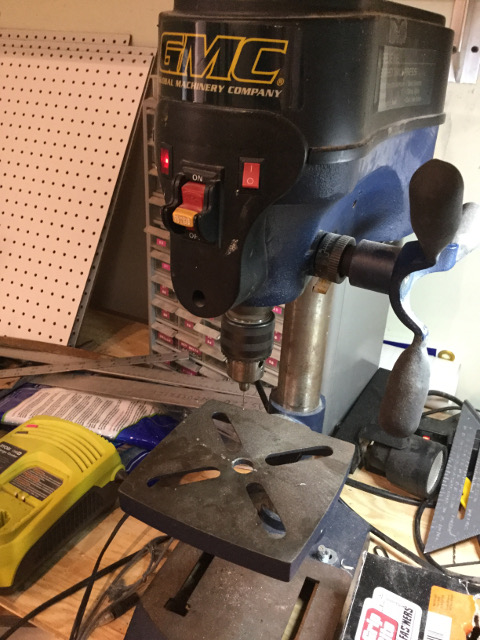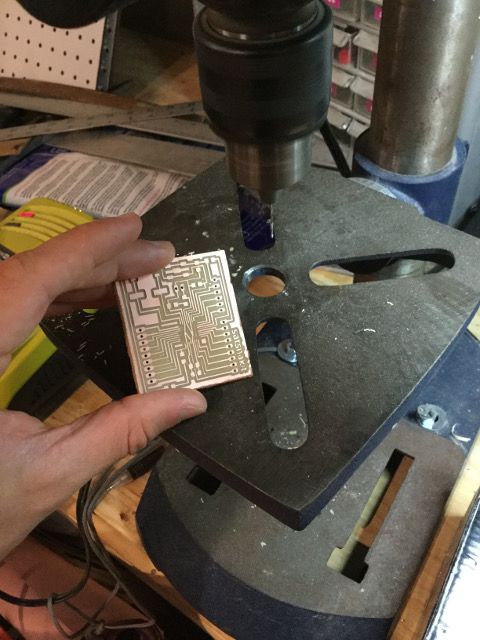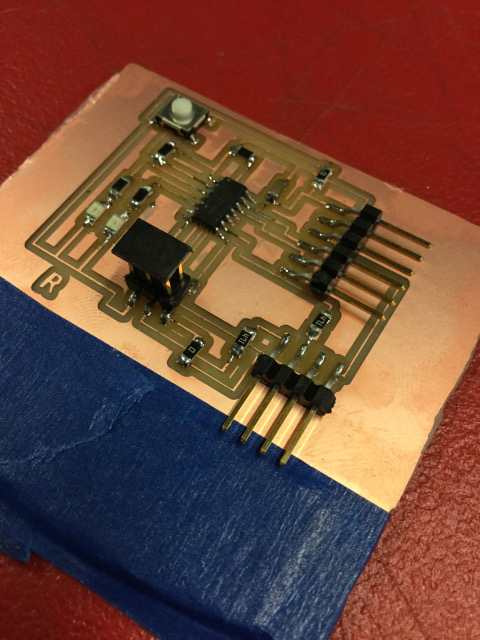In order to prepare myself for this week's assignment, I found a good tutorial on the Arduino website that I recommend to anyone looking for a place to start. I first got some practice using two standard Arduino boards, programming one as the slave and the other as the master. In order to program the slave board, I made sure that the Wire sketch was included in my library. Then, I opened the example, Wire, Master writer, and ran the program. Next, I programmed the second board as the slave by using the example, Wire, Slave receiver. I have included the example codes that I used to practice here.
Master SlaveI began milling another Satshakit Arduino. I had a little bit of trouble, as we did not have a 1/32 inch bit for the through holes. Making use of the tools we have here in the Labs, I used the drill press with a small bit to make the holes the old fashioned way. I have enjoyed finding these intersections between the digital fabrication and the hands on methods. Shawn pointed out that the Modela works better for milling side to side, rather than through materials anyway. It is good to have that in my back pocket in case I ever get into this situation again. Once I got that squared away, I stuffed I needed to stuff the board, which was also tricky, since the microcontroller is so intricate, but also because I did not have the proper size crystal. Shawn had some 16 mHz crystals that normally are used with through holes, but I was able to simply solder the legs onto the pads instead. It was another cool alternative! With all of this in place, I began to research the ways to create a network between a light sensor and a light switch.


I have found this section to be the most difficult so far. I thought that the light sensor would be useful for my final project. However, due to time constraints on the final project, I went ahead and included the light sensor and the switch on the same board, instead of interacting over a network. The final project worked wonderfully but I was still felt a little behind with the networking project, and so I began to consider using one of the Hello World boards, which brought me in a positive direction. I consulted with my neighbor, Lara, about this and after milling and stuffing the new board, we programmed it with the bootloader.
 NEW Graphics Test
NEW Graphics Test